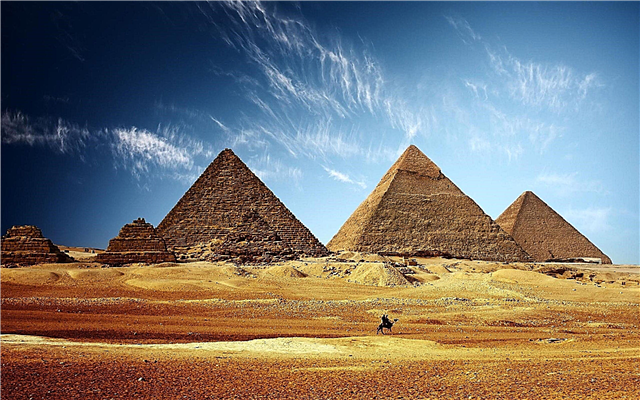The smallest planet in the solar system is Mercury. The high temperature will lead to the instant death of all living things. The planet was named after the Roman god - the messenger of Mercury. Without special instruments, you can see this amazing planet with an ordinary telescope. Next, we suggest reading more interesting and fascinating facts about the planet Mercury.

1. Mercury is the closest to the Sun compared to other planets.
2. Mercury receives 7 times more solar energy than the Earth.
3. This is the smallest planet in the terrestrial group.
4. The surface of Mercury is similar to the surface of the Moon. The ledges can be up to 1000 kilometers in diameter. There are a large number of craters, some of which are quite high.
5. Mercury has its own magnetic field, many times weaker than the earth. This suggests that the core may be liquid.
6. Mercury has no natural satellites.
7. The planet was named in honor of the god Voden by the knights of the Teutonic order.
8. The planet is named after the fast-footed ancient Roman god Mercury.
9. The top layer of the planet's soil is represented by small fragmented rock of low density.
10. The radius of the planet is 2439 km.
11. The acceleration of free fall is 2.6 times less than the Earth's.
12. Mercury has been known since ancient times and is a "wandering star".
13. In the morning you can see Mercury in the form of a star near sunrise, and in the evening at sunset.
14. In ancient Greece, it was customary to call Mercury Hermes in the evening, and Apollo in the morning. They believed that these are different space objects.
15. During the Mercurian year, the planet rotates around its axis by one and a half revolutions. That is, within 2 years only three days pass on the planet.
16. The speed of rotation of Mercury around the axis is rather slow. In orbit, the planet moves unevenly. For about 8 days out of 88, the planet's orbital speed exceeds rotational.
17. If at this time to be on Mercury and look at the Sun, then you can see that it moves in the opposite direction. According to legend, this fact is called the effect of Joshua, who allegedly stopped the Sun.
18. The evolution of the planet was greatly influenced by the Sun. The strongest solar tides reduced the planet's rotation rate. Earlier it was 8 hours, and now it is 58.65 Earth days.
19. Solar days on Mercury are 176 terrestrial.
20. About a century ago, the opinion arose that half of the surface of Mercury is hot, since the planet is always facing the Sun on one side. But this claim was wrong. The daytime side of the planet is not as hot as expected. But the night side was characterized by a powerful flow of heat.
21. The run-up of temperatures is quite contrasting. At the equator, the night temperature is -165 ° C, and the daytime temperature is + 480 ° C.
22. Astronomers put forward the version that Mercury has an iron core. Presumably, it makes up 80% of the mass of the entire celestial body.
23. Periods of volcanic activity ended about 3 billion Earth years ago. Further, only collisions with meteorites could change the surface.
24. The diameter of Mercury is approximately 4878 km.
25. Extremely rarefied atmosphere of the planet contains Ar, He, Ne.
26. Since Mercury does not move away from the Sun by more than 28 °, its observation is very difficult. The planet can be observed only in the evening and morning hours, low above the horizon.
27. Observations on Mercury indicate the presence of a very weak atmosphere.
28. The cosmic speed on Mercury is very low, so molecules and atoms have the ability to easily escape into interplanetary space.
29. The second cosmic speed of the planet is 4.3 km / sec.
30. Equatorial rotation speed 10.892 km / h.

31. The density of the planet is 5.49 g / cm2.
32. In shape, Mercury resembles a ball with an equatorial radius.
33. The volume of Mercury is 17.8 times less than that of the Earth.
34. The surface area is 6.8 times smaller than that of the earth.
35. The mass of Mercury is approximately 18 times less than that of the Earth.
36. Numerous scarps on the surface of Mercury are explained by the contraction that accompanied the cooling of the celestial body.
37. The largest crater, 716 km across, was named after Rembrandt.
38. The presence of large craters suggests that there was no large-scale crustal movement there.
39. The radius of the core is 1800 km.
40. The core is surrounded by a mantle and is 600 km long.
41. The thickness of the mantle is about 100-200 km2.
42. In the core of Mercury, the percentage of iron is higher than that of any other planet.
43. Presumably the magnetic field of Mercury is formed due to the dynamo effect, as on Earth.
44. The magnetosphere is very powerful and can catch the plasma of the solar wind.
45. Captured by Mercury, an atom of helium can survive in the atmosphere for about 200 days.
46. Mercury has a weak gravitational field.
47. The insignificant presence of the atmosphere makes the planet vulnerable to meteorites, winds, and other natural phenomena.
48. Mercury is the brightest among other cosmic bodies.
49. There are no seasons familiar to people on Mercury.
50. Mercury has a comet-like tail. It has a length of 2.5 million km.
51. The Plain of Heat Crater is the most visible feature of the planet. The diameter is 1300 km.
52. The Caloris Basin formed on Mercury after the collision of lava from the interior.
53. The height of some mountains on Mercury can reach 4 km.
54. The orbit of Mercury is very elongated. Its length is 360 million kilometers.
55. The eccentricity of the orbit is 0.205. The spread between the orbital plane and the equator is equal to an angle of 3 °.
56. The latter value indicates little change during the off-season.
57. All parts of the plane on Mercury are relative to the starry sky in one position for 59 days. They turn to the sun after 176 days, which is equal to two Mercurian years.
58. Longitudes are 90 ° east of the sun-drenched region. If observers were placed on these edges, they would witness an amazing picture: two sunsets and sunrises.
59. At the meridians 0 ° and 180 °, you can observe 3 sunsets and 3 sunrises per solar day.
60. The core temperature is approximately 730 ° C.
61. The tilt of the axis is 0.01 °.
62. Declination of the North Pole 61.45 °.
63. The largest crater is named Beethoven. Its diameter is 625 kilometers.
64. It is believed that the flat region of Mercury is younger in age.
65. Despite the high temperature, there are huge reserves of water ice on the planet. It is located at the bottom of deep craters and polar points.
66. Ice in the craters of the planet never melts, as high walls block it from the sun's rays.
67. There is water in the atmosphere. Its content is about 3%.
68. Comets deliver water to the planet.
69. The main chemical element of the atmosphere of Mercury is helium.
70. In the period of good visibility, the brightness of the planet is -1m.
71. There is a hypothesis that Mercury was previously a satellite of Venus.
72. Before the process of formation and accumulation of the planet, the surface of Mercury was smooth.
73. At the equator of Mercury, the magnetic field strength is 3.5 mG, closer to the poles 7 mG. This is 0.7% of the earth's magnetic field.
74. The magnetic field has a complex structure. In addition to the bipolar one, it also contains fields with four and eight poles.
75. The magnetosphere of Mercury from the side of the yellow star is strongly compressed under the influence of the solar wind.
76. The pressure at the surface of Mercury is 500 billion times less than that of the Earth.
77. Perhaps the planet has carbon monoxide and carbon dioxide.
78. Observations of Mercury relative to the sun show its movement to the left, then to the right. In doing so, he takes a crescent shape.
79. The first people observed Mercury with the naked eye about 5 thousand years ago.
80. The first astronomer to observe Mercury was Galileo Galilei.
81. Astronomer Johannes Kepler predicted the motion of Mercury across the solar disk, which was observed in 1631 by Pierre Gassendi.
82. Ice in the planet's craters never melts, as high walls block it from the sun's rays.
83. The crater at the equator Hun Kal became the reference object for the longitude readout on Mercury. Its diameter is 1.5 km.
84. Some craters are surrounded by radial-concentric faults. They divide the crust into blocks, which indicates the geological youth of the craters.
85. The brightness of the rays emanating from the craters intensifies towards the full moon.
86. Scientists believe that the formation of the magnetic field of Mercury occurs due to the rotation of the liquid outer core.
87. The inclination of the orbit of Mercury to the ecliptic is one of the most significant in the solar system.
88. Mercury makes 4 revolutions around the Sun and 6 revolutions around its axis during the year.
89. The mass of Mercury is 3.3 * 10²³ kg.
90. Mercury transits 13 times every century. With the naked eye, you can see the planet passing through the sun.
91. Despite its small radius, Mercury surpasses the giant planets: Titan and Ganymede in mass. This is due to the presence of a large core.
92. The winged helmet of the god Mercury with a caduceus is considered an astronomical symbol of the planet.
93. According to the calculations of scientists, Mercury collided with a planet whose mass is 0.85 of the Earth's mass. The impact could have occurred at an angle of 34 °.
94. Where is the killer planets that collided with Mercury, now remains a mystery.
95. The cosmic body, which collided with Mercury, tore off the mantle from the planet and carried it into the vastness of space.
96. In 1974-75, the Mariner-10 spacecraft captured 45% of the planet's surface.
97. Mercury is an inner planet, as its orbit lies inside the orbit of the Earth.
98. Once every several centuries, Venus overlaps Mercury. This is a unique astronomical phenomenon.
99. At the poles of Mercury, the observers often observed clouds.
100. Ice on the planet can be stored for billions of years.









